
Faroe Islands: Every day, Hanus Egholm drives across a very special roundabout
Feature
The Eysturoy Tunnel connects the two largest Faroe Islands, shortens delivery routes, and features the world’s only underwater roundabout. For Hanus Egholm, the main attraction is that it helps him carry out his day-to-day work.
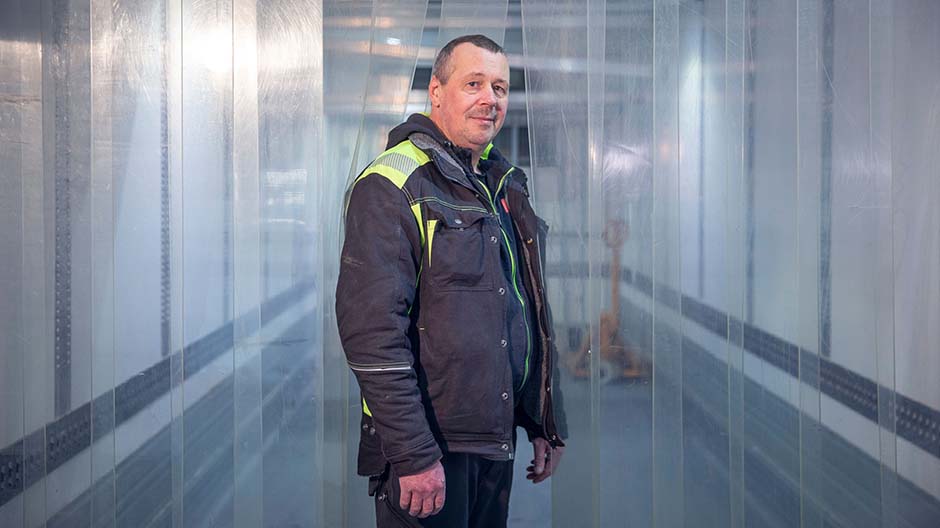
More than three decades of truck experience: Hanus Egholm.
A sudden snowfall. During the night, a cold front has swept in over the Faroe Islands from the open North Atlantic ocean. Good job that Hanus Egholm’s Arocs tyres are fitted with spikes. The 54-year-old loads the last pallets of food into the refrigerated box of his Arocs 3263. Then it’s time to head north.
“I have been driving the route to Klaksvík since 2002,” says Hanus as he leaves the island's capital Tórshavn behind. This was when Hanus, who is from the Faroes originally, came back to the islands after 10 years in Denmark – like many other Faroe Islanders. “I was homesick,” says Hanus, who lives with his family in Tórshavn and has a summer house on one of the smaller islands. After returning home, he started working as a driver for Poul Michelsen.
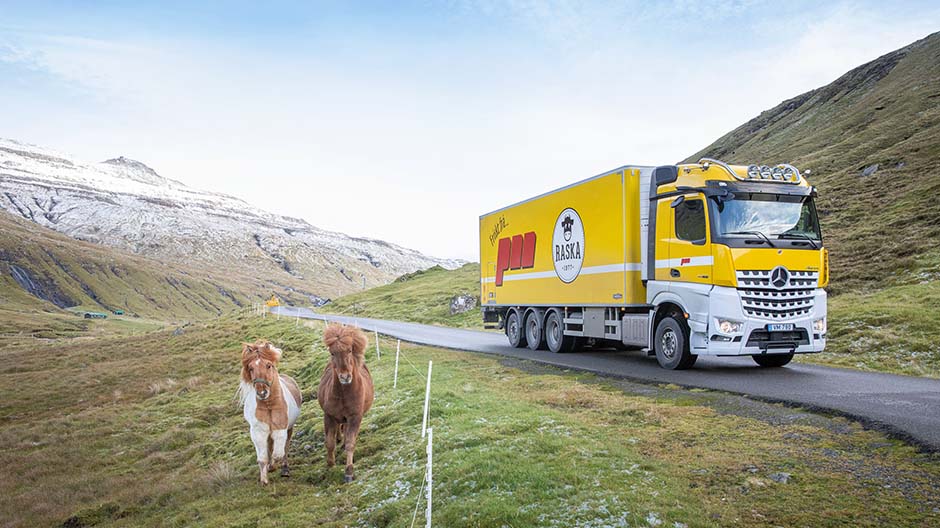
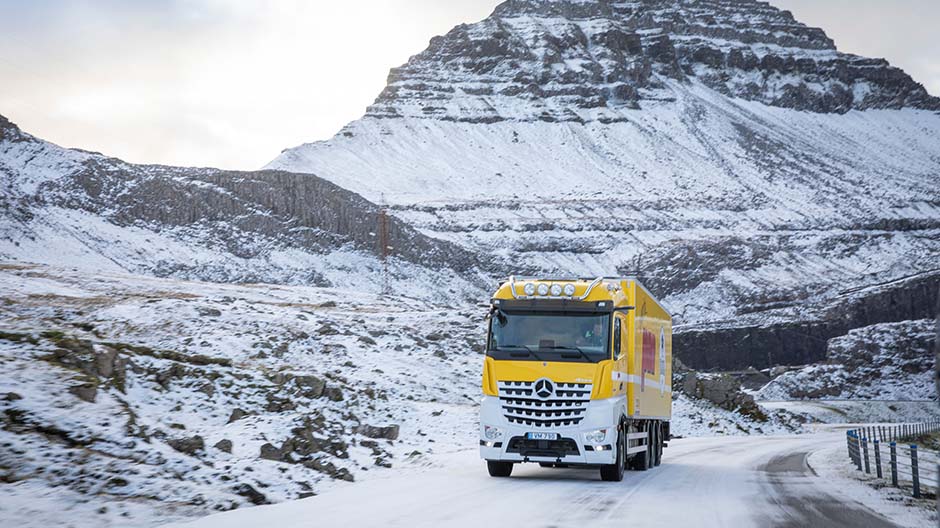
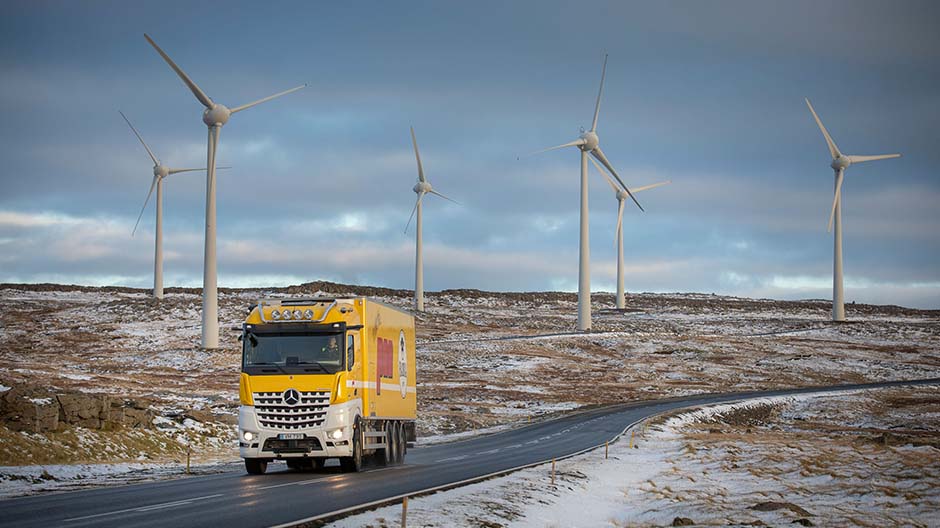
20 years, one route.
Hanus estimates that he has travelled to Klaksvík 5.000 times since 2002. Each time, he has had fresh food and dairy products on board. “The fresh milk has to be on the supermarket shelves by 11 am.” What makes this journey particularly special is that there used to be around 70 kilometres of narrow country roads and a bridge between Tórshavn and Klaksvík. “Up until 2006, there was even a ferry trip which I had to plan into my journey,” recalls Hanus. This was replaced by a tunnel in 2006. And in 2020, yet another dramatic change was made to Hanus’ work life with the opening of the Eysturoy Tunnel.
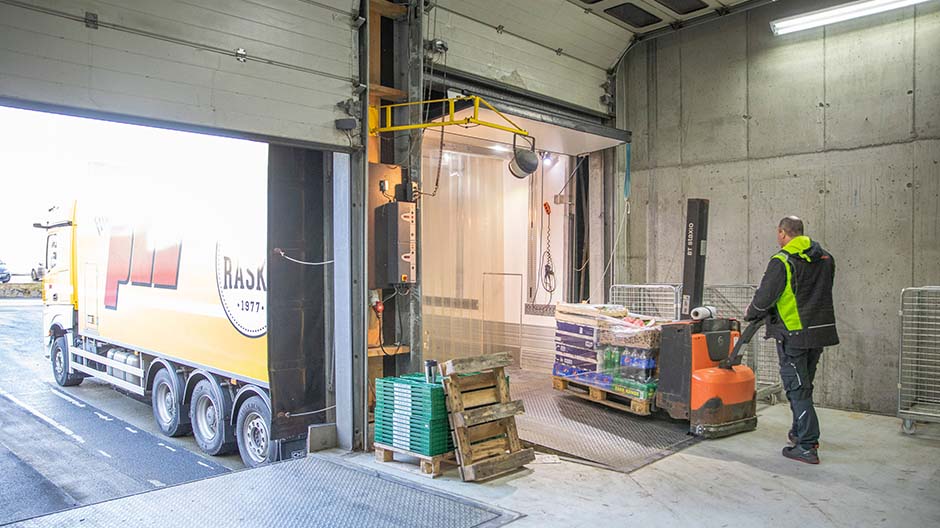
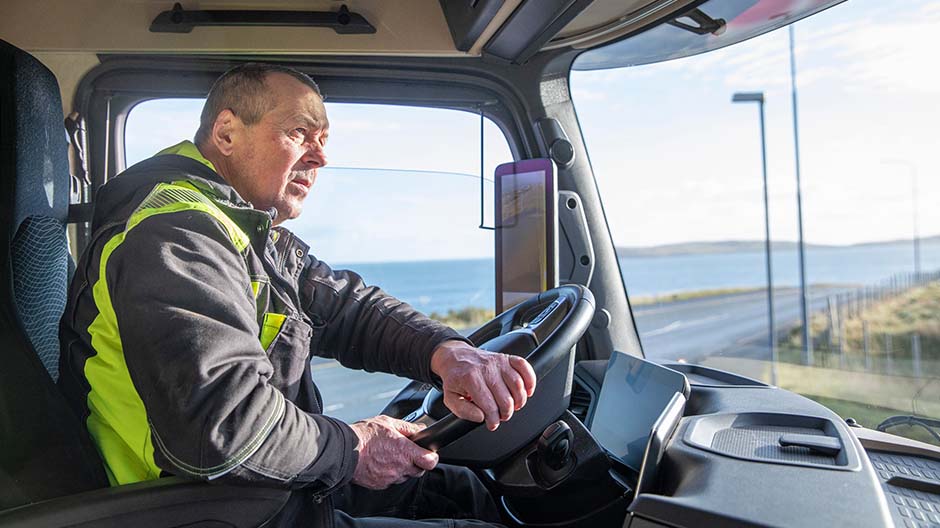
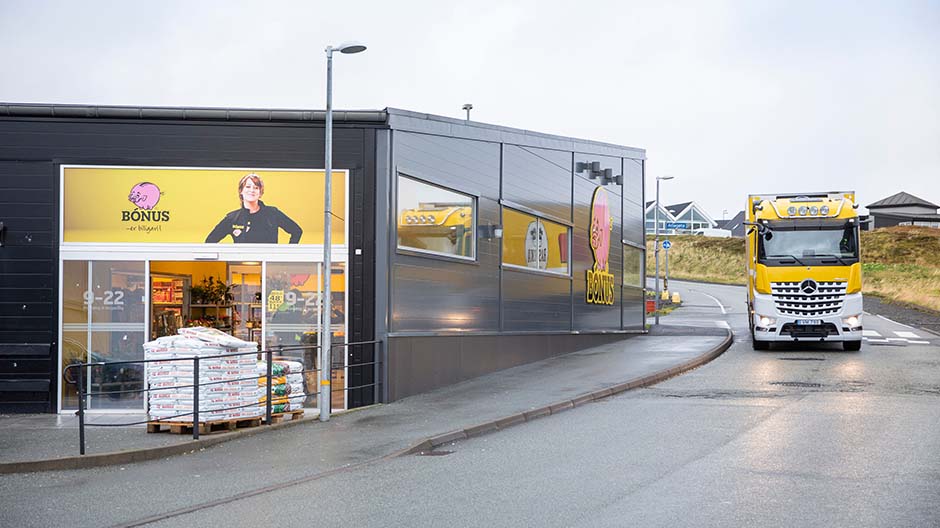
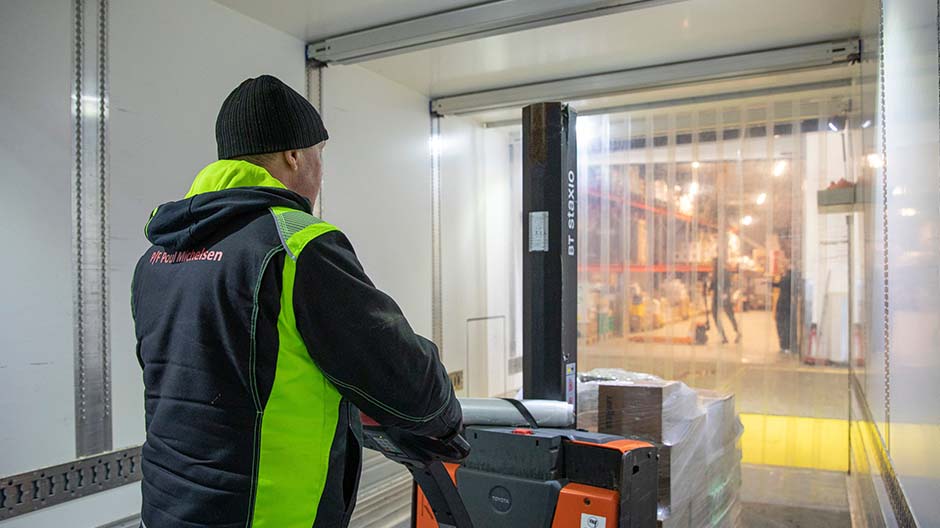
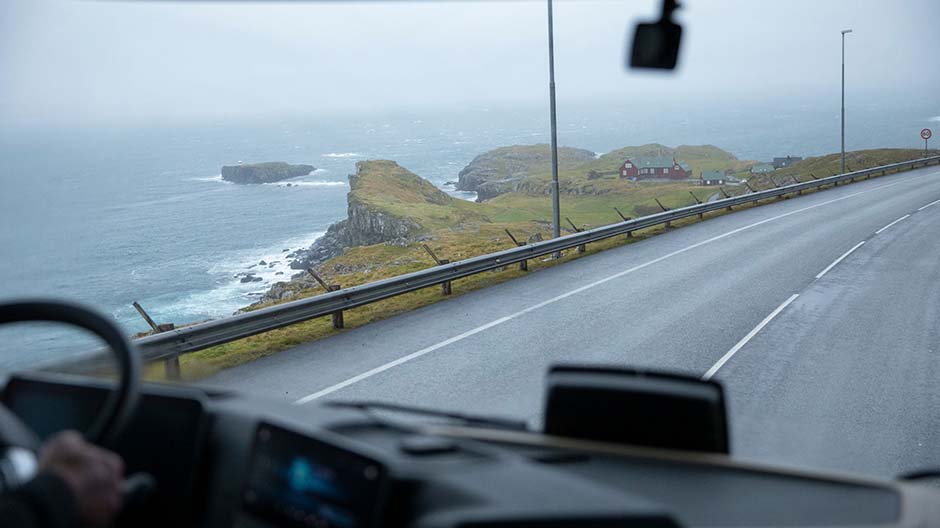
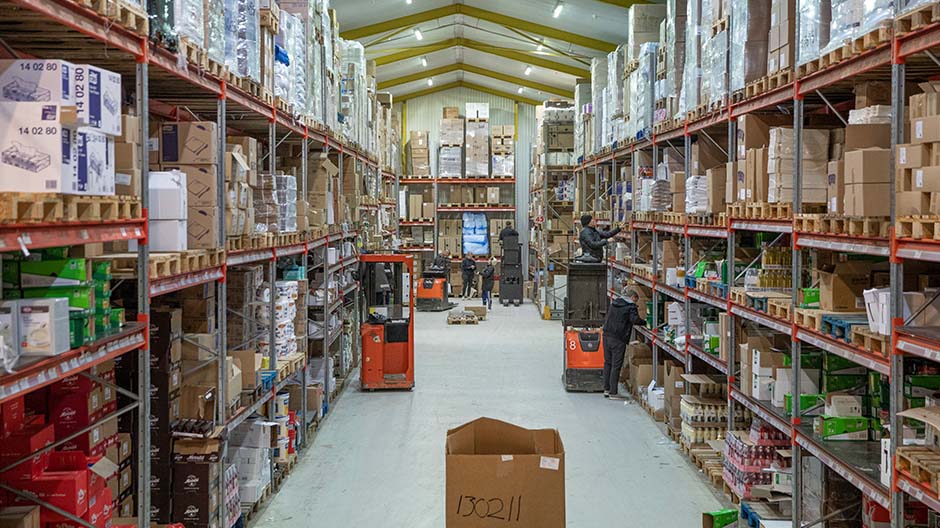
The unique underwater roundabout caused a stir all over the world and the spectacular illuminated tunnel became an internet sensation, but for Hanus, the Eysturoy Tunnel had one major benefit in particular: “The tunnel was saving me 30 minutes of travel time every single day”. And that's 30 minutes each way! While the round trip used to total around 140 kilometres previously, it is now only around 80 kilometres.
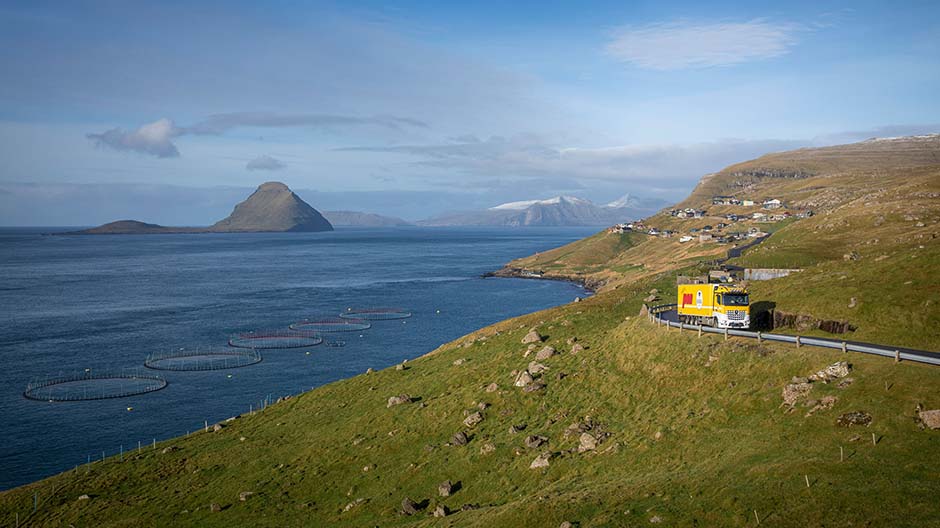
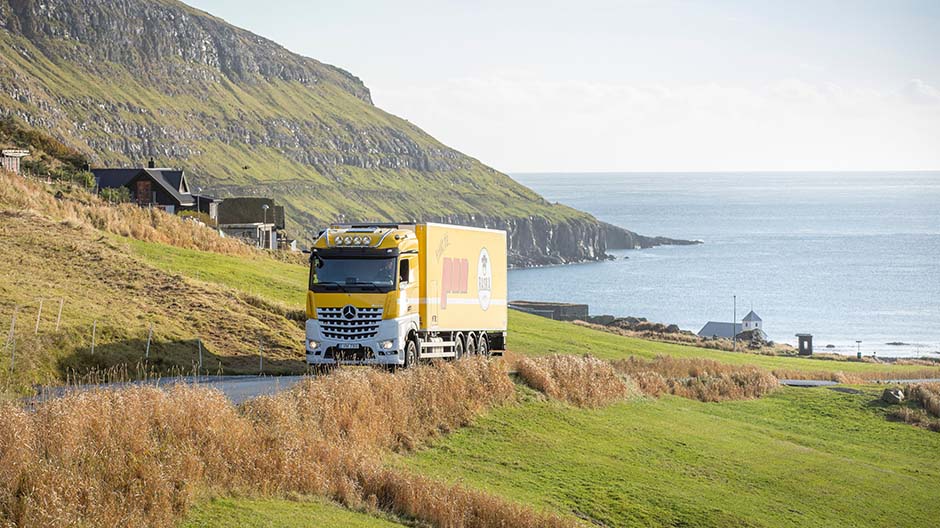
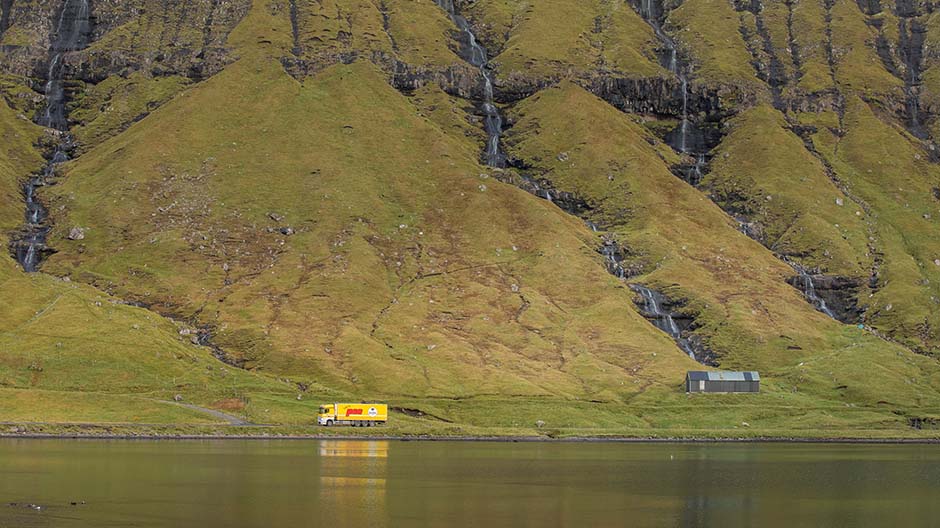
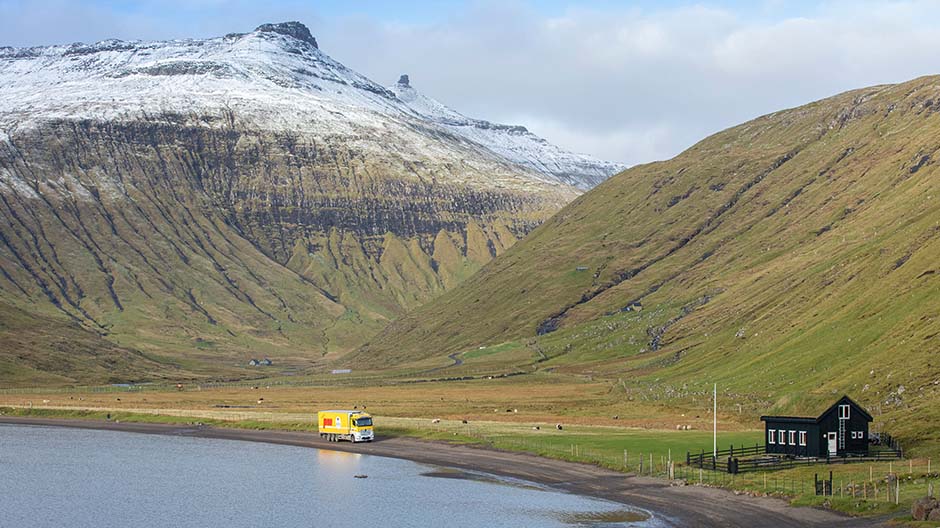
Less time pressure.
The 70 kilometre stretch to Klaksvík is exposed to all kinds of weather conditions – whether it be wind, rain, snow or slippery roads. What's more: “We had to set out early to be back in Tórshavn before rush hour,” recalls Hanus. Rush hour? The North Atlantic archipelago is home to 52.000 islanders. Most of the jobs are in the capital Tórshavn. “And lots of people have to commute.” No wonder that around 42.000 vehicles in total are registered on the islands.
This article contains additional material (videos, images and reports etc.) for registered RoadStars members. In order to experience the article to the full, you need to log in with your RoadStars account or register for one free of charge.
Become a RoadStar and gain access to exclusive content and campaigns!
Login for RoadStars members
Not yet a member? Join RoadStars now
Obtain exclusive access to exciting events and activities which only RoadStars can offer.
Join RoadStars“I have a lot less time pressure now. That's why I love the tunnel,” says Hanus as he drives under the illuminated archway at the tunnel entrance. The frosty darkness is replaced by a blue light. Hanus lets the Arocs roll down the tunnel's 5% gradient. He drives through passages illuminated in different colours. And then, after about eight kilometres, you can see it: the underwater roundabout, taking centre stage with red and blue light and a steel sculpture. Hanus takes the exit towards Kláksvik. “Tourists also love to do another lap.” He doesn't need to do that though: after all, he'll be driving through the tunnel again in a couple of hours. “And tomorrow, too,” he says with a grin. For him, the tunnel is so much more than just an attraction.
Tunnels on the Faroe Islands.
The Faroe Islands are an archipelago of 18 islands. Ferries and even helicopter flights make important connections between the islands. The Faroe Islanders have been building tunnels since the 1960s so that even the most remote towns and villages can be better connected to the larger towns such as Tórshavn and Kláksvik. More than 20 tunnels have been built over the past 60 years, ranging from a single-lane tunnel opening up a previously inaccessible valley to an ambitious, state-of-the-art project connecting entire islands. These projects mean that stormy sea passages and time-consuming crossings can now be avoided.
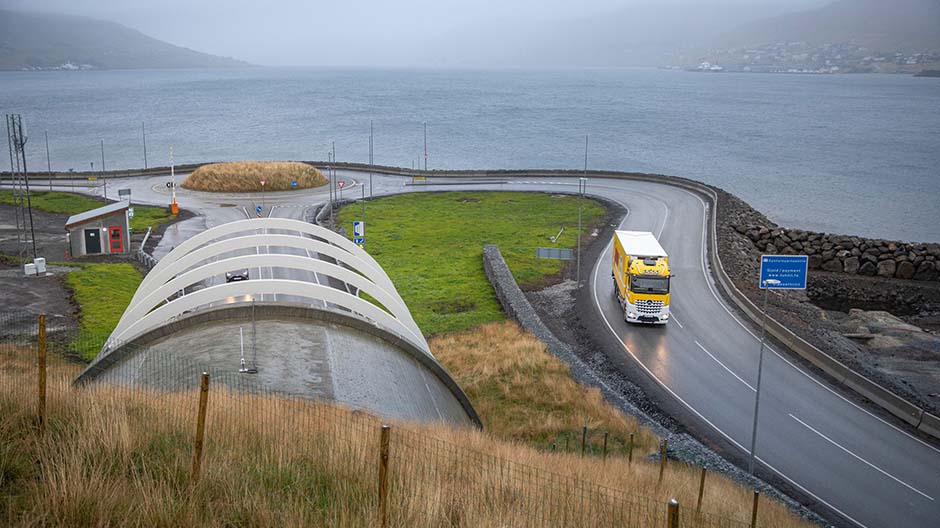
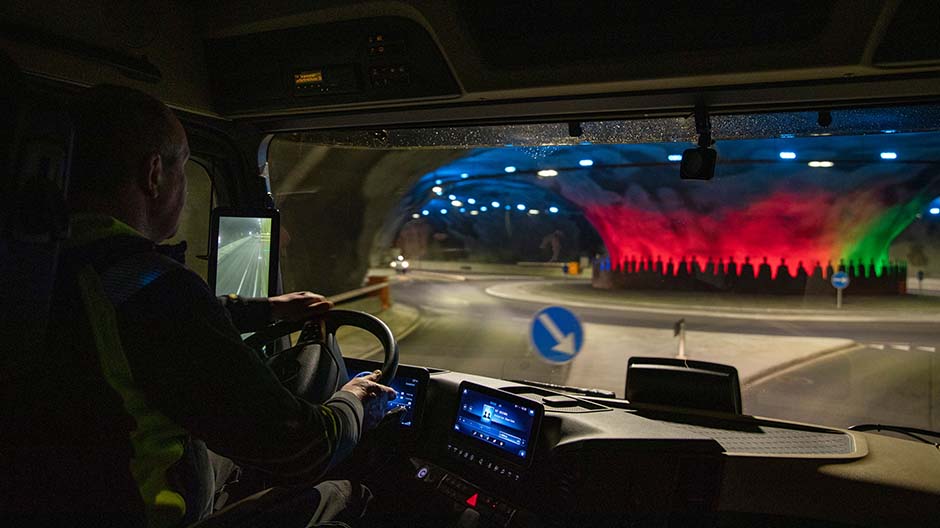
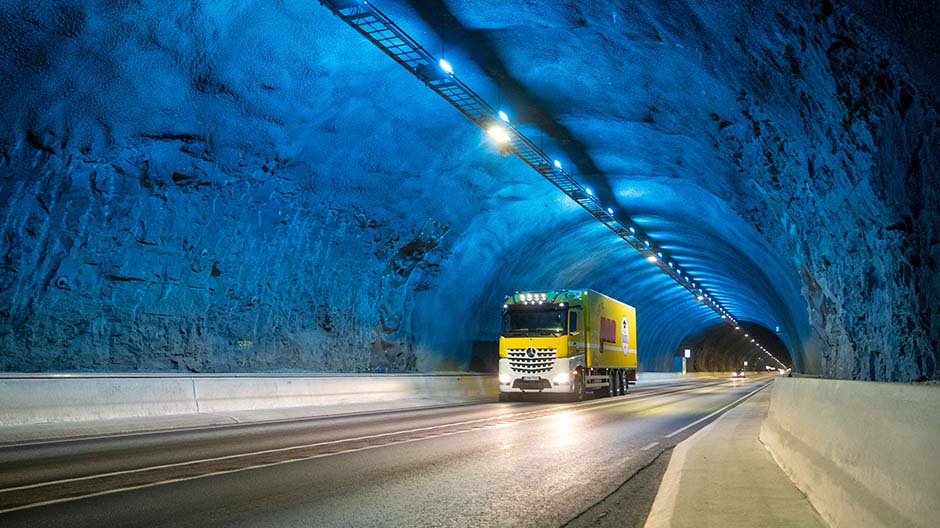
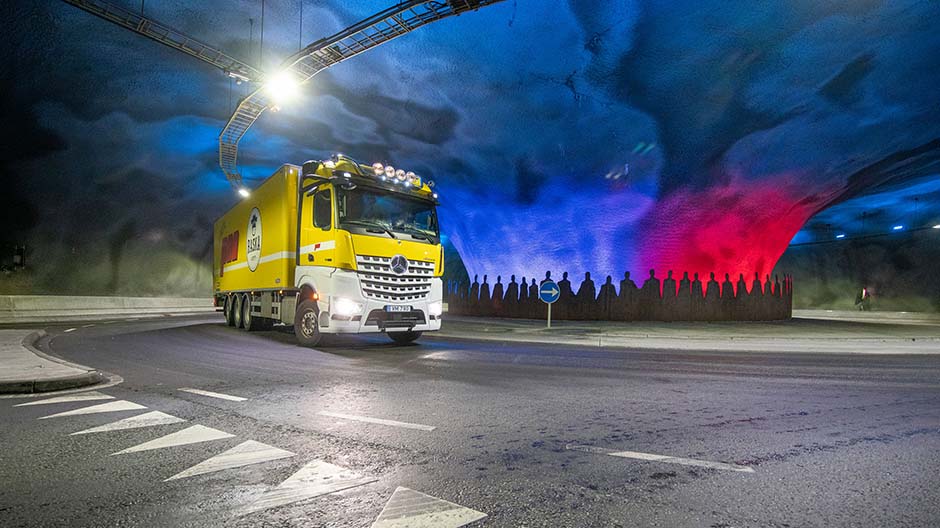
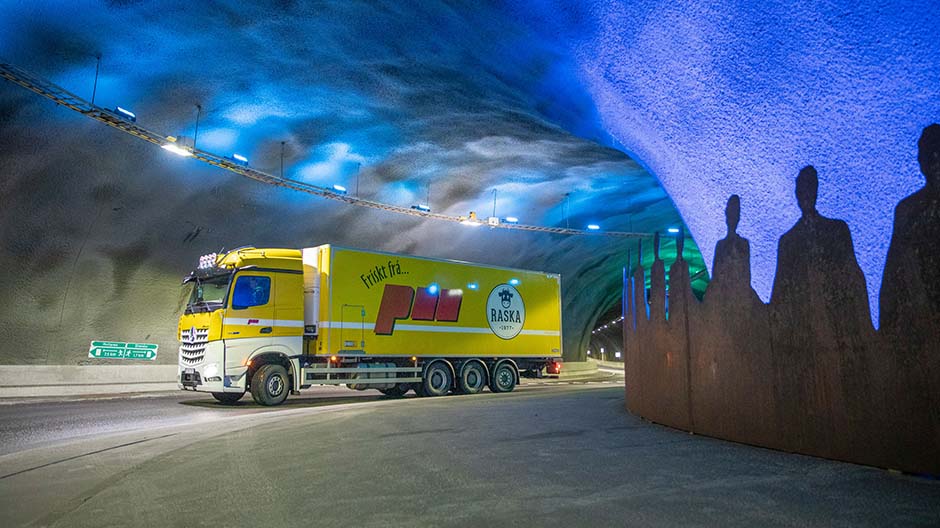
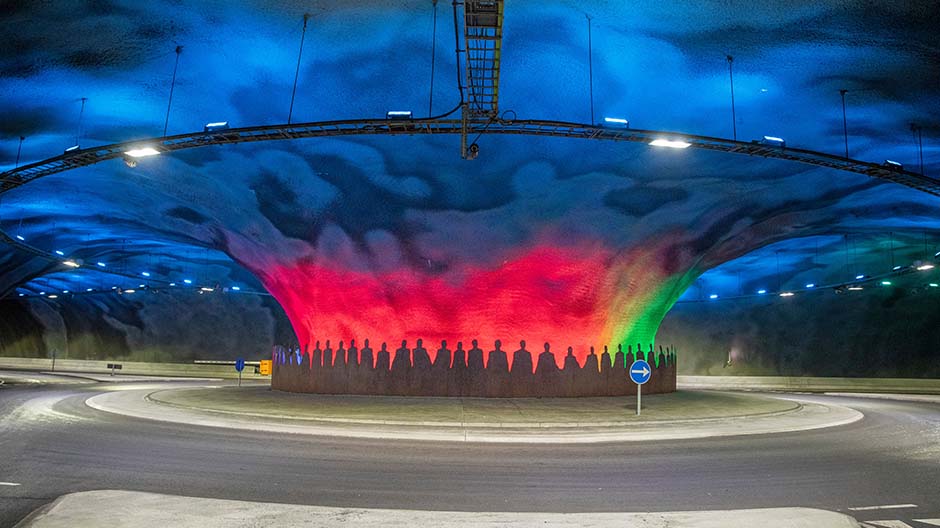
The Eysturoy Tunnel.
Unpredictable weather and an enormous ocean current hinder shipping traffic between the two largest Faroe Islands: Streymoy and Eysturoy. The Eysturoy Tunnel helps keep things moving. Built using the drill-and-blast method, it is around 11 kilometres in length and is 189 metres below sea level at its lowest point, with a gradient of up to 5%. More than a million cubic metres of rock were moved in order to build the tunnel. During the two-year construction period, 138.000 truck journeys were needed to remove the material. Then it was time for the expansion: this included processing 40.000 cubic metres of shotcrete and laying around 150 kilometres of cable. The cost of the islands' biggest infrastructure project to date is the equivalent of EUR 360 million. In 2021, 5.000 vehicles passed through the Eysturoy Tunnel every single day.
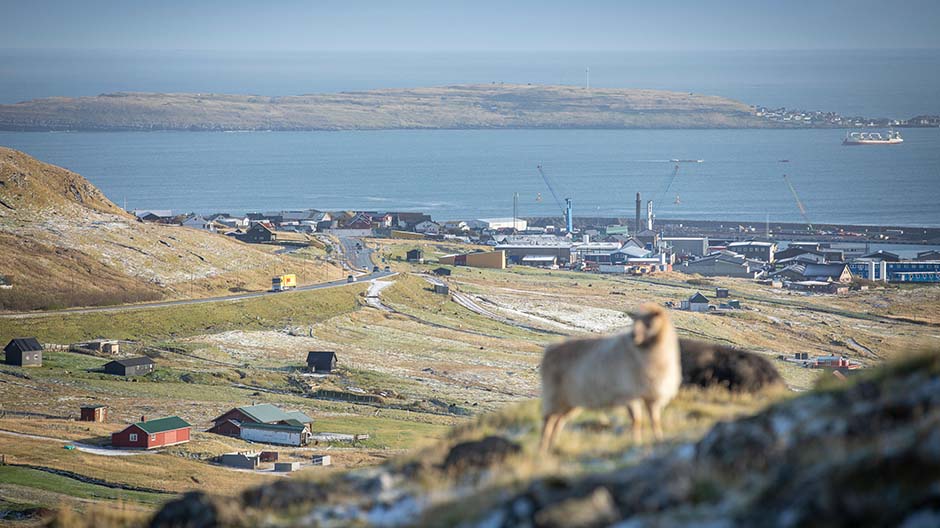
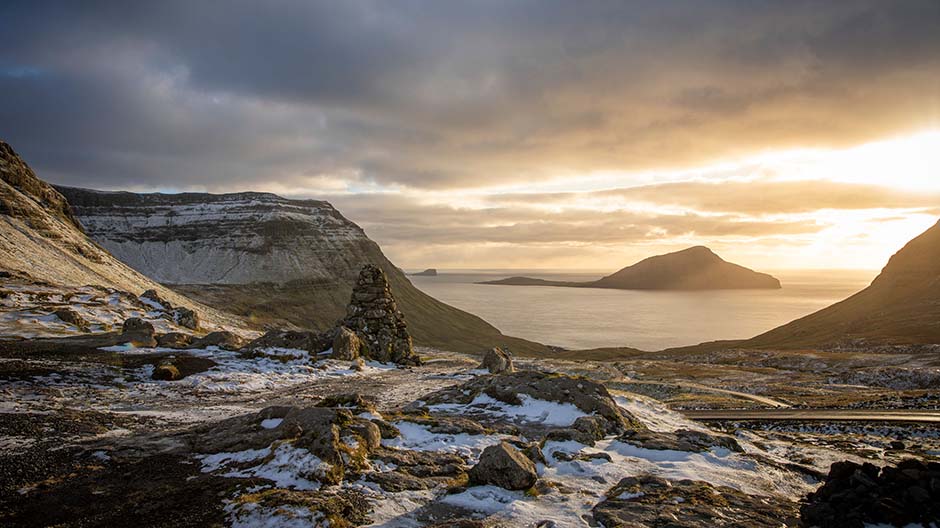
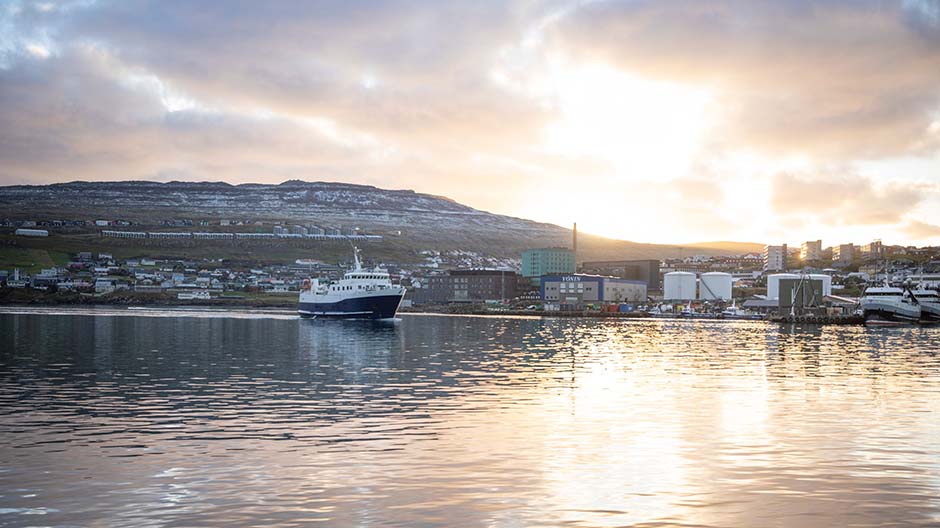
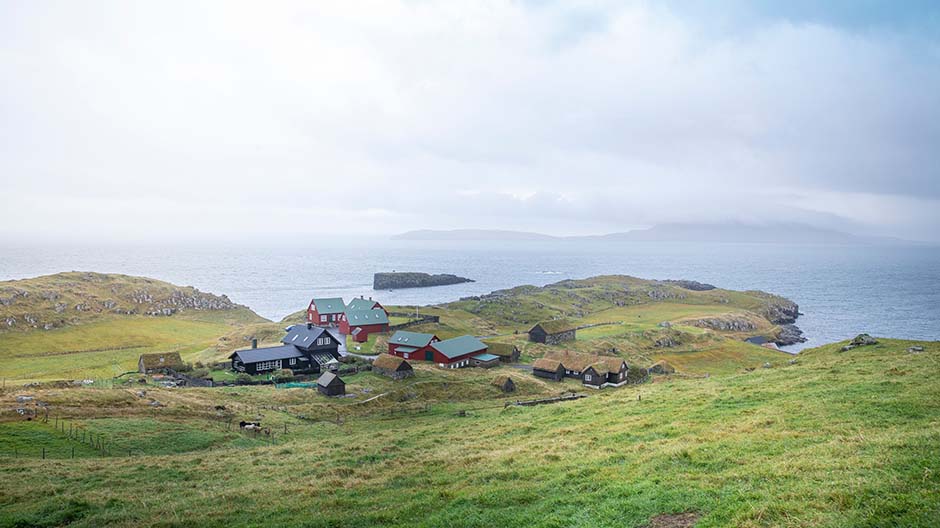
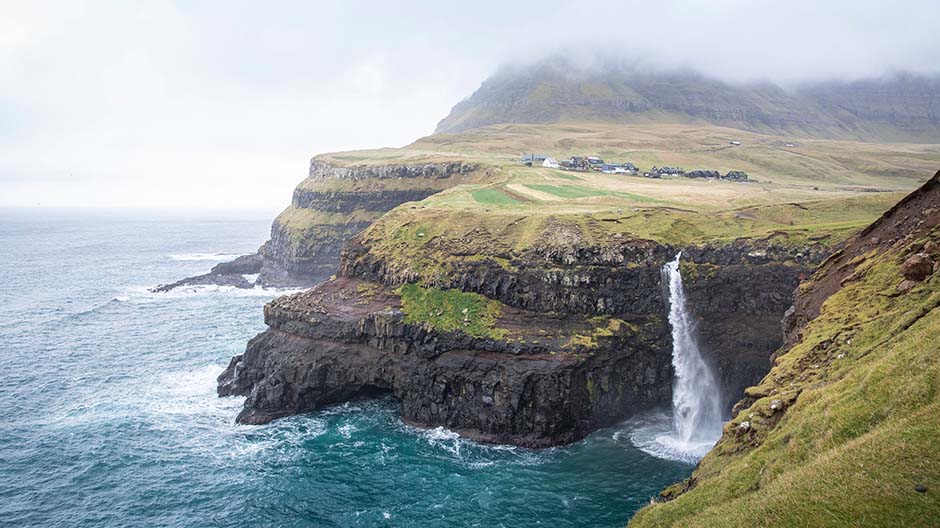
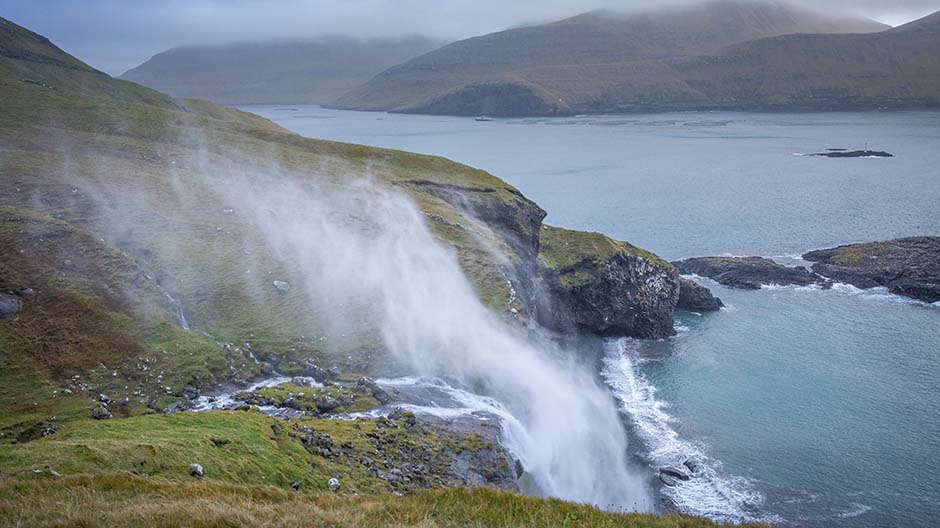
Photos: Sebastian Vollmert
Video: Martin Schneider-Lau




Comment
Please log in to post a comment.
25 comments
Dobrá práce
Dobrá práce
Da bekommt man direkt Lust, dort selber zu fahren... 🚛
Auf jeden Fall schon mal eine lohnenswerte Anregung für den Reise-Wunschzettel... 👍
Da bekommt man direkt Lust, dort selber zu fahren... 🚛
Auf jeden Fall schon mal eine lohnenswerte Anregung für den Reise-Wunschzettel... 👍
Solche unterirdischen Kreisverkehre mit einzigartigen Beleuchtungen gibts auch in Norwegen diverse und ich durfte bei meinem vergangenen Skandinavientrip (bis ans Nordkap) selbst 2 davon "erFahren" 👍 Als ich das erste mal einen diesr unterirdischen Kreisverkehre angesteuert habe, "musste" ich sogar gleich 3 (!) Runden drehen, weil mich dieses Bauwerk mit den einzigartigen Licht-/Farbspielen so toll fasziniert hatte 😀😃😄
Solche unterirdischen Kreisverkehre mit einzigartigen Beleuchtungen gibts auch in Norwegen diverse und ich durfte bei meinem vergangenen Skandinavientrip (bis ans Nordkap) selbst 2 davon "erFahren" 👍 Als ich das erste mal einen diesr unterirdischen Kreisverkehre angesteuert habe, "musste" ich sogar gleich 3 (!) Runden drehen, weil mich dieses Bauwerk mit den einzigartigen Licht-/Farbspielen so toll fasziniert hatte 😀😃😄
Auf den Drohnenaufnahmen von den Wasserfällen sieht man gar nicht, wie stürmisch es war. Meine neue FPV Drohne musste echt kämpfen.
Auf den Drohnenaufnahmen von den Wasserfällen sieht man gar nicht, wie stürmisch es war. Meine neue FPV Drohne musste echt kämpfen.
Ein wahnsinniger Bericht toll gemacht ein Super Job und Tolle Bilder inklusive Video 😊😎🥰
Ein wahnsinniger Bericht toll gemacht ein Super Job und Tolle Bilder inklusive Video 😊😎🥰
Faszinierende Fotos und ein tolles Video.
Der Tunnel würde mich auch mal reizen zum befahren.
👍👍👍👍👍👍⛟😎
Faszinierende Fotos und ein tolles Video.
Der Tunnel würde mich auch mal reizen zum befahren.
👍👍👍👍👍👍⛟😎
Da möchte man gleich auch mal hinfahren und den Job übernehmen 👍😎🚛
Echt ein top Erlebnis diesen Bericht zu lesen und zu sehen was es auf dieser Welt alles gibt 👍😎😎🚛
Grüße aus Deutschland an die Färöer Inseln
Euer Dominik 🚛😎👍
Da möchte man gleich auch mal hinfahren und den Job übernehmen 👍😎🚛
Echt ein top Erlebnis diesen Bericht zu lesen und zu sehen was es auf dieser Welt alles gibt 👍😎😎🚛
Grüße aus Deutschland an die Färöer Inseln
Euer Dominik 🚛😎👍
Freut uns, dass dir der Artikel so gefällt 😊
Freut uns, dass dir der Artikel so gefällt 😊
👍
👍